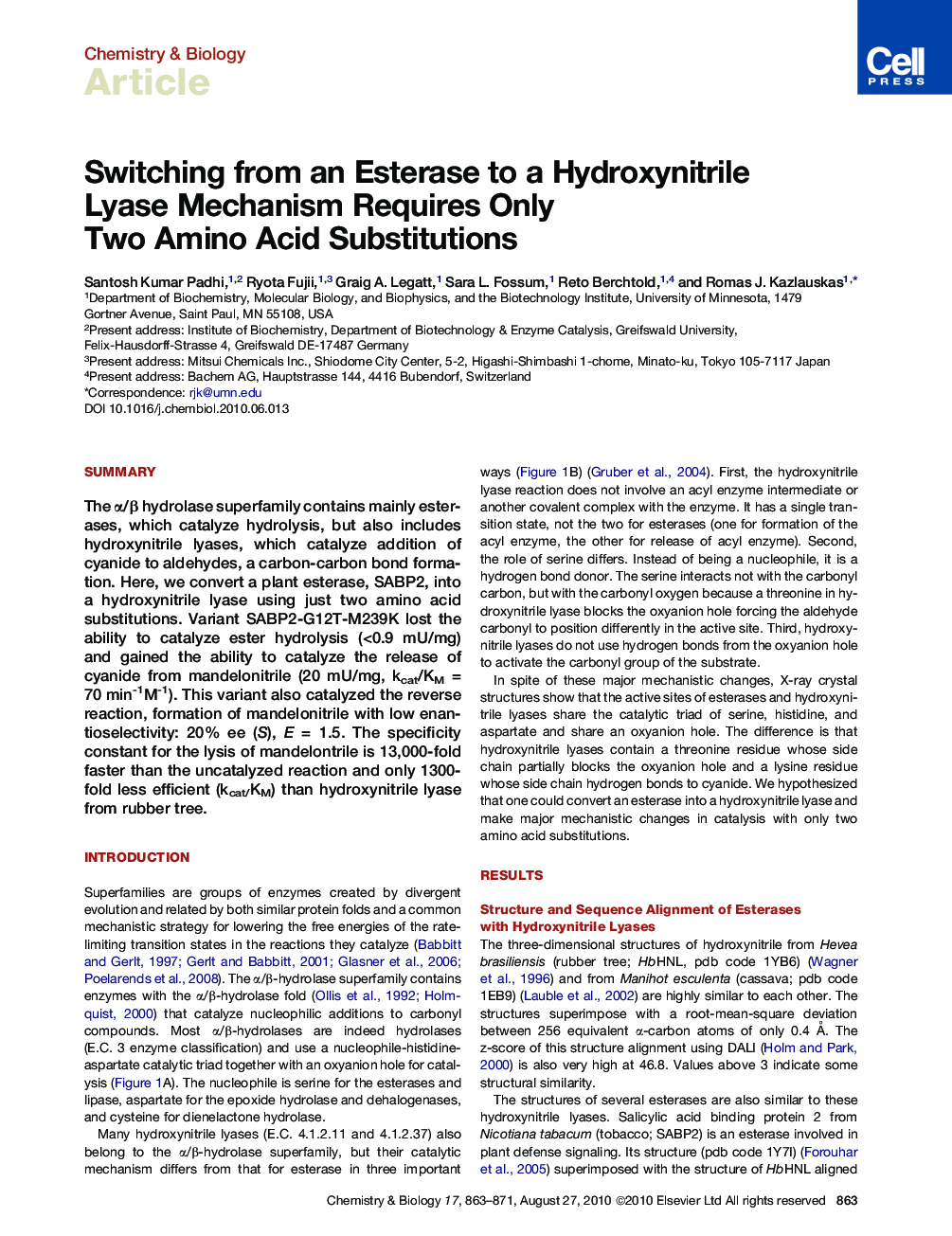| Article ID | Journal | Published Year | Pages | File Type |
|---|---|---|---|---|
| 1392400 | Chemistry & Biology | 2010 | 9 Pages |
SummaryThe α/β hydrolase superfamily contains mainly esterases, which catalyze hydrolysis, but also includes hydroxynitrile lyases, which catalyze addition of cyanide to aldehydes, a carbon-carbon bond formation. Here, we convert a plant esterase, SABP2, into a hydroxynitrile lyase using just two amino acid substitutions. Variant SABP2-G12T-M239K lost the ability to catalyze ester hydrolysis (<0.9 mU/mg) and gained the ability to catalyze the release of cyanide from mandelonitrile (20 mU/mg, kcat/KM = 70 min-1M-1). This variant also catalyzed the reverse reaction, formation of mandelonitrile with low enantioselectivity: 20% ee (S), E = 1.5. The specificity constant for the lysis of mandelontrile is 13,000-fold faster than the uncatalyzed reaction and only 1300-fold less efficient (kcat/KM) than hydroxynitrile lyase from rubber tree.
Graphical AbstractFigure optionsDownload full-size imageDownload high-quality image (387 K)Download as PowerPoint slideHighlights► Esterases and hydroxynitrile lyases differ in their catalytic mechanisms ► Two amino acid replacement converts esterase to hydroxynitrile lyase
